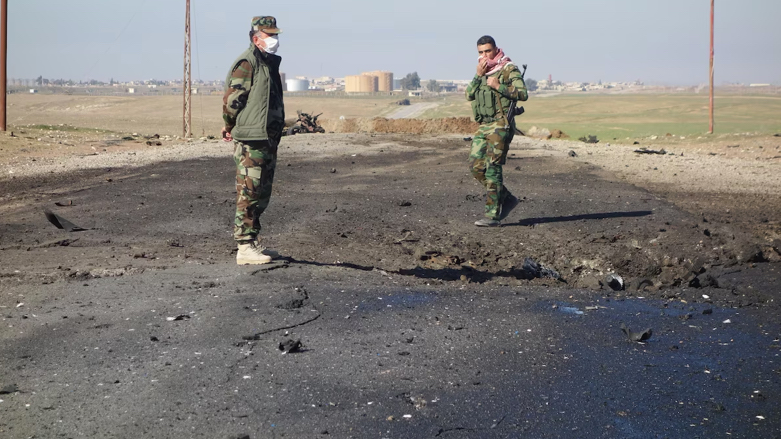Leaked Docs: ISIS Still Plotting Attacks in Europe; Seeks Chemical Weapons
The more serious terrorist threat, at least for now, appears to come from Syria, where the U.S. has responded with military action.

Classified U.S. documents were posted to chat groups on the internet by a reserve Air Force technician. That became known early this month, after which the young man responsible was arrested. Major U.S. media have a substantial number of those documents, and as those of particular interest to our readers emerge, Kurdistan24 will be reporting on them.
WASHINGTON DC, United States (Kurdistan 24) – According to classified documents leaked online by the young Air Force technician, Jack Teixera, ISIS is still pursuing its most nefarious activities: plotting terrorist attacks, particularly in Europe, while seeking to recover the chemical weapons capability it once had.
ISIS’s Leadership
ISIS’s “central leadership” is “believed to be based in Syria,” The Washington Post said, as it reported on a new set of documents.
There is also a significant ISIS presence in Afghanistan, which Americans call ISIS-K or ISIS-KP—ISIS Khorasan Province. According to a much earlier New York Times report, ISIS-K was founded in 2015 by “disaffected Pakistani Taliban” and “embraces a more violent version of Islam” than the Taliban.
Yet “the extent to which the Afghan chapter coordinates its operation” with the Syrian-based central leadership “is unclear,” the Post stated.
Thus, we do not really know if ISIS in Afghanistan operates at the direction of the ISIS leadership in Syria, or even if one party supports the other. In the extreme, it could be that pretty much all the two groups share is a name.
ISIS’s Plotting
In both Afghanistan and Syria, ISIS is still plotting terror attacks, the leaked documents reveal. The more serious threat, at least at present, appears to come from Syria, where the U.S. has responded with military action.
Indeed, such U.S. military action appears to have accelerated recently. In two separate attacks earlier this month, U.S. forces killed two senior ISIS leaders in northern Syria, who were involved in plotting terror attacks abroad.
A strike on April 4 killed an ISIS leader “responsible for planning ISIS attacks in Europe,” according to a CENTCOM statement.
On April 17, a helicopter raid killed an ISIS “operational planner responsible for planning terrorist attacks in the Middle East and Europe.”
Read More: Senior ISIS leader killed in US helicopter raid: CENTCOM
In addition, there was an ISIS plot (which, apparently, never became operational) to kidnap Iraqi diplomats in France or Belgium in order to trade them for the release of some 4,000 ISIS members detained in Iraqi prisons.
ISIS and Chemical Weapons
The leaked documents “reveal persistent effort by [ISIS],” the Post reported, “to obtain expertise for creating chemical weapons.”
Some seven years ago, when ISIS was at its peak, it had that capability. It recruited Salih al-Sabawi, a former Iraqi official and “Russia-trained engineer who had once helped [Saddam Hussein] build his extensive arsenal of chemical weapons,” the Post reported last July.
The Kurdistan Regional Government’s Counter-Terrorism Department worked with U.S. officials to uncover that program, which the Post described as “a crash effort aimed at building the biggest arsenal of chemical and, potentially, biological, weapons ever assembled by a terrorist group.”
“Sabawi’s intention” was “to create a large stockpile consisting of multiple types of chemical and biological agents to be used in military campaigns as well as in terrorist attacks against the major cities of Europe,” the Post reported.
Read More: Peshmerga helped thwart ISIS chemical attacks in Europe
Once U.S. officials understood ISIS’s aim, they launched, in 2015, a focused military campaign, targeting ISIS personnel involved in the production of chemical weapons, as well as the facilities for such production.
“By late 2016, all of [ISIS’s] known chemical weapons facilities had been destroyed, and most of its senior operators killed or captured,” the Post reported. “The liberation of Mosul a few months later effectively ended the program’s active phase.”
“Yet,” the Post added, citing two U.S. officials with what now appears to be commendable prescience, “it may not have eliminated the group’s ambitions for chemical and biological weapons.”
And so that does, indeed, appear to be the case.
